If you’re planning to put your house on the market, you’re probably wondering how to get the most money for your home. That’s where staging comes in. Home staging is a proven way to get more buyers interested and help you meet or exceed your asking price. So what exactly is home staging, what’s the return on investment, and how effective can it be? This article will answer those questions plus more and explain everything you need to know about how to stage a house.
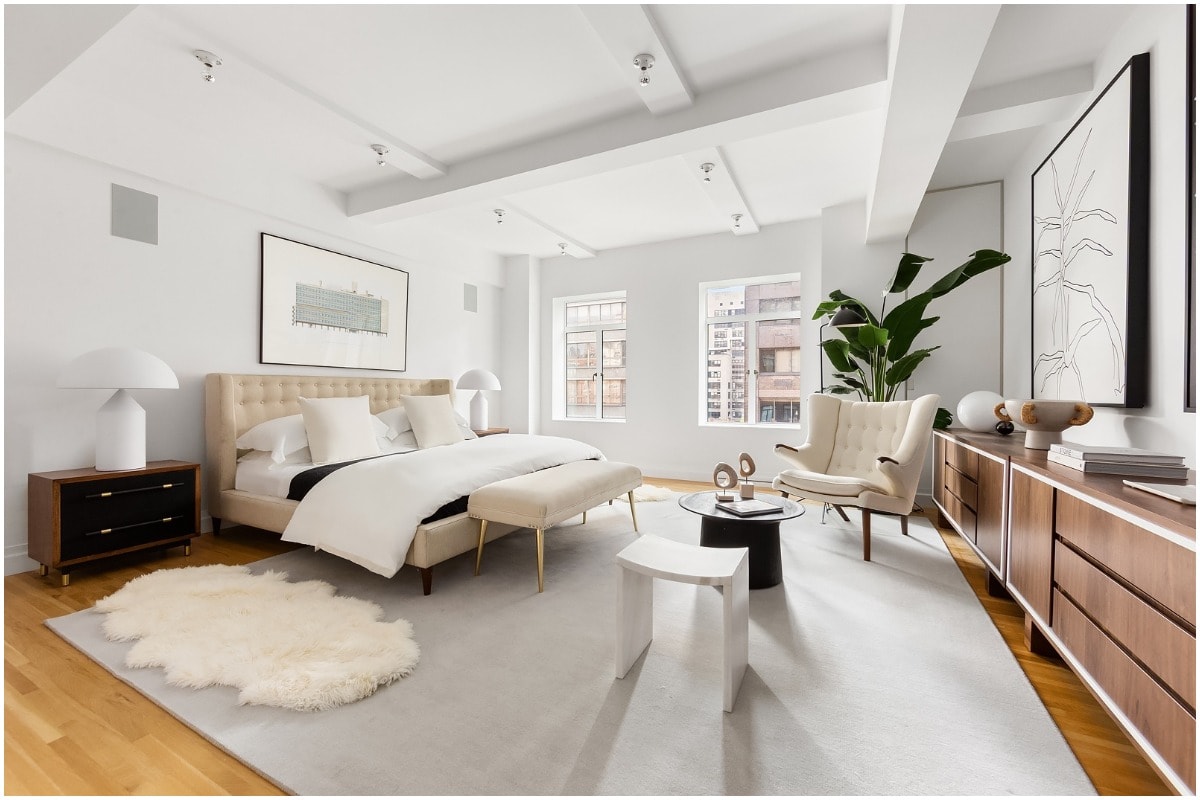
How staging a house affects sale price
Home staging has been around for decades, but the rise of home decorating television has increased the need for showing a staged home.
The good news is that it pays off. According to the National Association of Realtors (NAR) 2021 Profile of Home Staging, 47% of buyers agents indicated that staged homes had an effect on most buyer’s views of a home. And 38% said that home staging increased the offer amount by 1 to 10%.
With the median home sales price currently at $380,271, that can mean a few thousand to tens of thousands more in net proceeds from your home sale.
When and why should you stage your house?
Home staging isn’t just for walk-throughs. Your home should be staged when you get listing photography and videography done. It’s important to pay attention to this as 7 out of 10 agents have found photos, videos, and virtual walkthroughs to be more important due to COVID. More so, a Redfin study found that homes listed with professional photos sold quicker and for more money compared to those listed with amateur photos. Work with a professional photographer to ensure you get high-quality photos of your staging.
The basics of staging a house
Staging a house is about creating a neutral space for potential buyers to imagine themselves living in. Think of it as offering a blank canvas for prospective buyers to paint their future lives on.
Staging also helps buyers visualize where their stuff will go. Empty rooms or rooms filled with too much furniture make it difficult to understand if there’s room for a king size bed or a home office.
Home staging comes down to a few basic principles. Most homebuyers will be able to follow the general rules, but some may opt for professional help. When you’re selling your home, it’s important to show it off in the most appealing way possible.
Staging begins with a few key tasks:
- Decluttering
- Cleaning
- Depersonalizing
- Highlighting
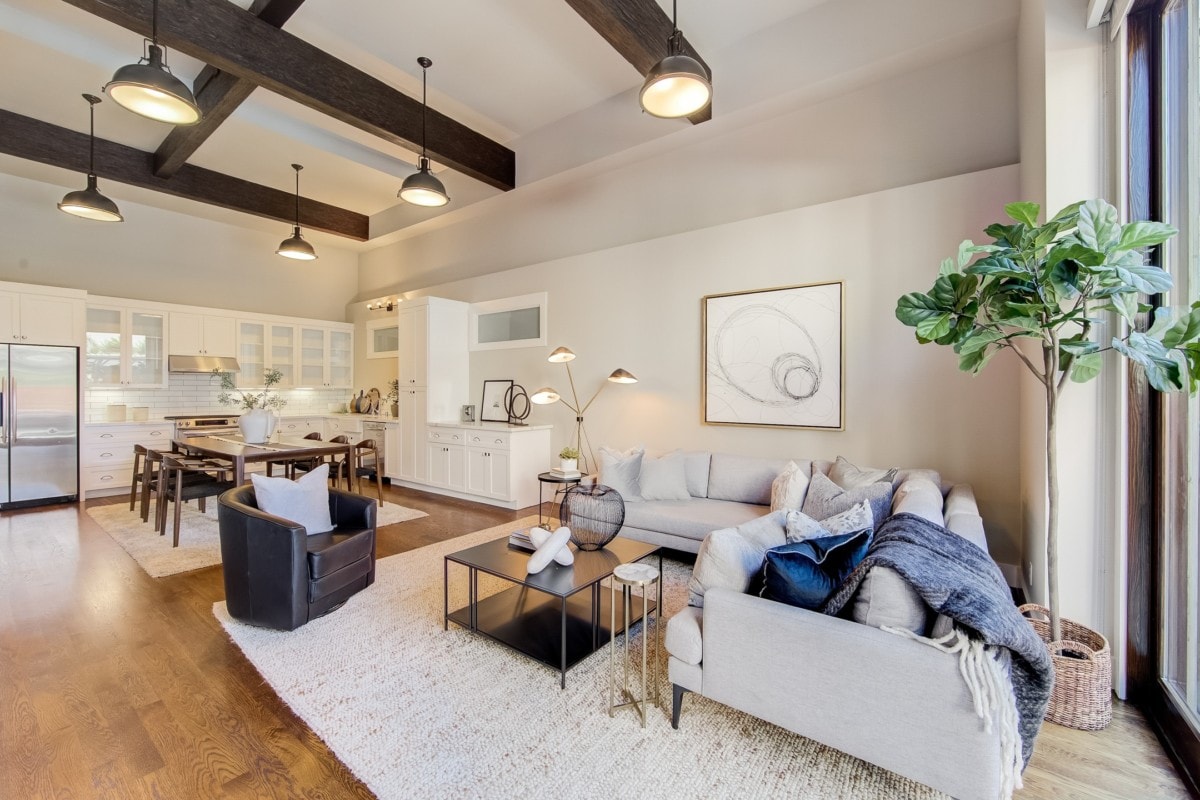
Decluttering
Clutter is a fact of life, but potential buyers don’t want to see yours while touring a home. Clutter makes your home seem smaller and may lead buyers to believe there isn’t enough space for their family.
Decluttering is more than removing the mail pile. You should declutter junk drawers, cabinets, closets, and your crawl space or basement. Buyers can and should inspect those areas during the viewing.
Decluttering is a great task to undertake as you prepare to move. First, decluttering means there will be less for you to pack up. Second, you can make some extra cash when you get rid of your no-longer-needed items through a garage sale or tax-deductible donation.
Some easy ways to declutter your home include:
- Removing kitchen appliances from countertops
- Donating unused items
- Editing your pantry
- Cleaning out your closet
- Creating zones for specific items
Cleaning
Cleaning your home keeps your potential buyers focused on the details of your space, not dirt and grime. It has the added benefit of making your home smell great. If you deal with pet odors, be sure to use a deodorizer — baking soda is cheap and effective. You can also freshen the smell of your home with scented essential oils such as lavender.
Don’t forget your walls, doors, and cabinetry. Pay attention to places where hands tend to fall — such as doorknobs, locks, corners, and door frames. Over time, the grime from our hands builds up on these surfaces.
Cleaning these areas with warm soapy water made of gentle dish soap with degreaser usually gets the job done. If stains are stubborn, vinegar or a degreaser solution like Simple Green can often get these stains out. But if you’ve got years of grime to remove, you may need more action. Don’t be afraid to invest in a fresh coat of neutral paint or hire a cleaning service as it can make a huge difference.
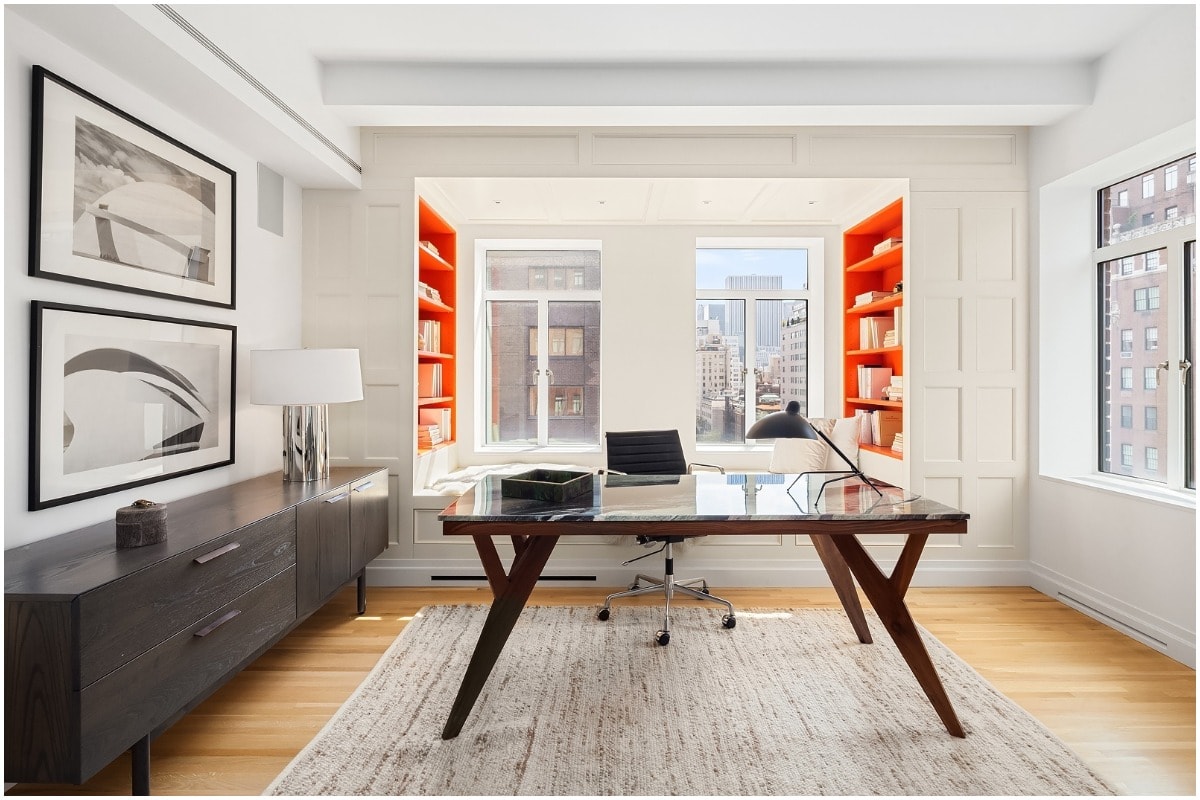
Depersonalizing
Your personal objects make it more difficult for buyers to connect with your home and imagine themselves living there. Depersonalize by removing family photographs, memorabilia, and collectibles. You should also store items like toothbrushes and deodorant in a cabinet or storage bin and your clothes neatly in closets and drawers. Finally, remove anything that aligns you with a specific viewpoint. That means religious objects, political items, signs, and posters.
Highlighting your home’s best features
Each room has a unique selling point. This could be a fireplace, a bay window, crown molding, high ceilings, or hardwood floor inlays. These selling points should become the focal point of a room when buyers first walk into your home.
You should arrange your furniture and decor in such a way that makes these unique details immediately obvious to the buyer. Flanking your fireplace with chairs, hanging neutral and airy curtains to frame your window, and using lighting to your advantage will draw attention to what’s amazing about your home.
Low on focal points? There are many ways to add unique architectural details, and most of them won’t break the bank. Just remember that staying neutral is key. You want something that lends itself to many styles and sensibilities.
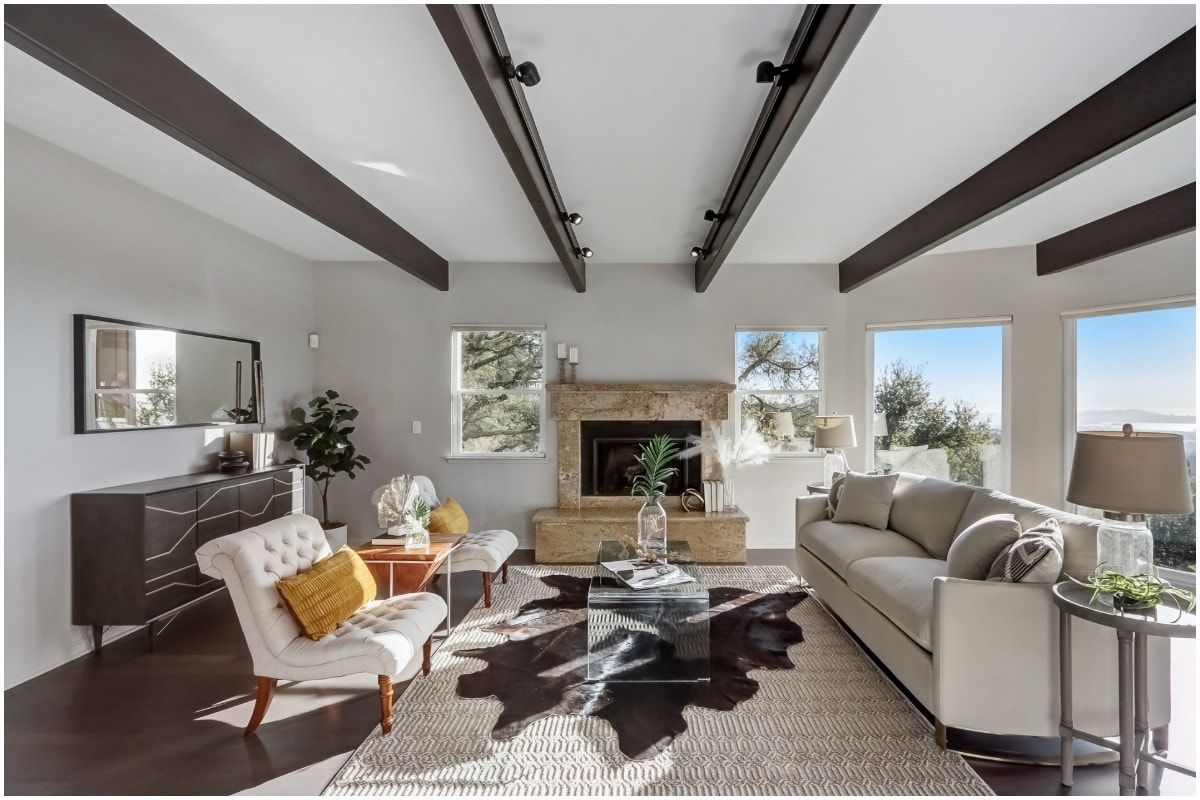
How to stage each room of your house
Staging with curb appeal
Because the outside of your home makes the first impression on buyers, curb appeal is important. Small tweaks can make a big impact. Some examples include:
- Removing dead plants or foliage
- Renovating your landscape
- Adding complementary plants or planters
- Replacing your doormat
- Painting your front door
- Updating outdoor living spaces
- Power washing concrete and siding
- Installing a new mailbox and house numbers
Staging an entryway
It is important that your entryway is inviting as it’s one of the first places potential homebuyers will see. Adding a potted plant or vase of flowers can make the transition from outside to inside feel cohesive. Entryway furniture should be proportional to the space. Make sure to avoid overcrowding. If your home doesn’t have a designated entry, use a rug to define the space.
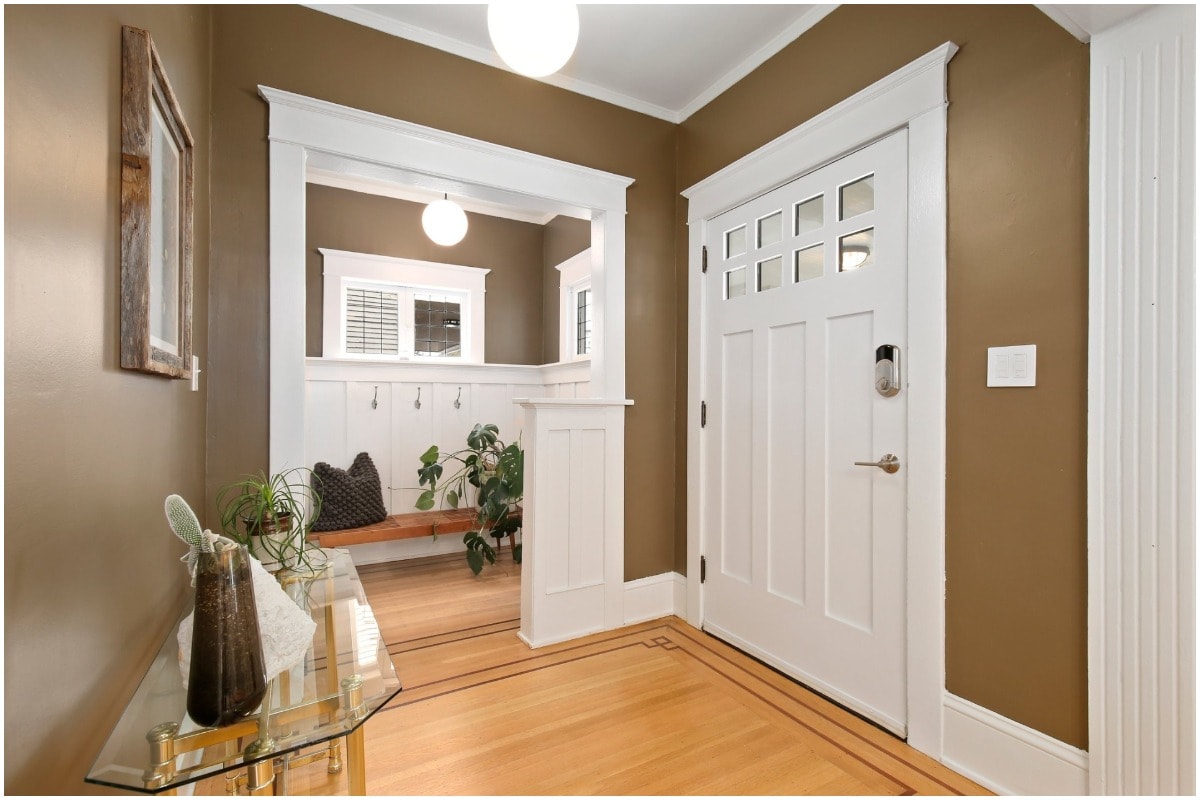
Staging a kitchen
A freshly remodeled kitchen is a great way to attract buyers, but small changes make a difference as well. Start by clearing your countertops and appliances. Store kitchen gadgets in cabinets or storage. Freshen up your cabinet paint and update the hardware to make an outdated kitchen look new again.
When it comes to styling, less is more. A vase of fresh flowers or a small stack of cookbooks is enough to make the kitchen feel lived in, but clean.
Staging a dining room
If you have a dining room, you don’t need to set your table with your finest dishes, but you should make your formal dining room feel like one. Be sure your table is free of dust and use a neutral table runner to bring everything together.
Remove anything that doesn’t belong in a dining room. Many homeowners use their dining table for more than eating, but you want your buyer to envision entertaining in this space.
If you don’t have a dining room, be sure to create a dining area in your home. A well-proportioned table in the kitchen or modern stools at a breakfast bar will do in smaller spaces.
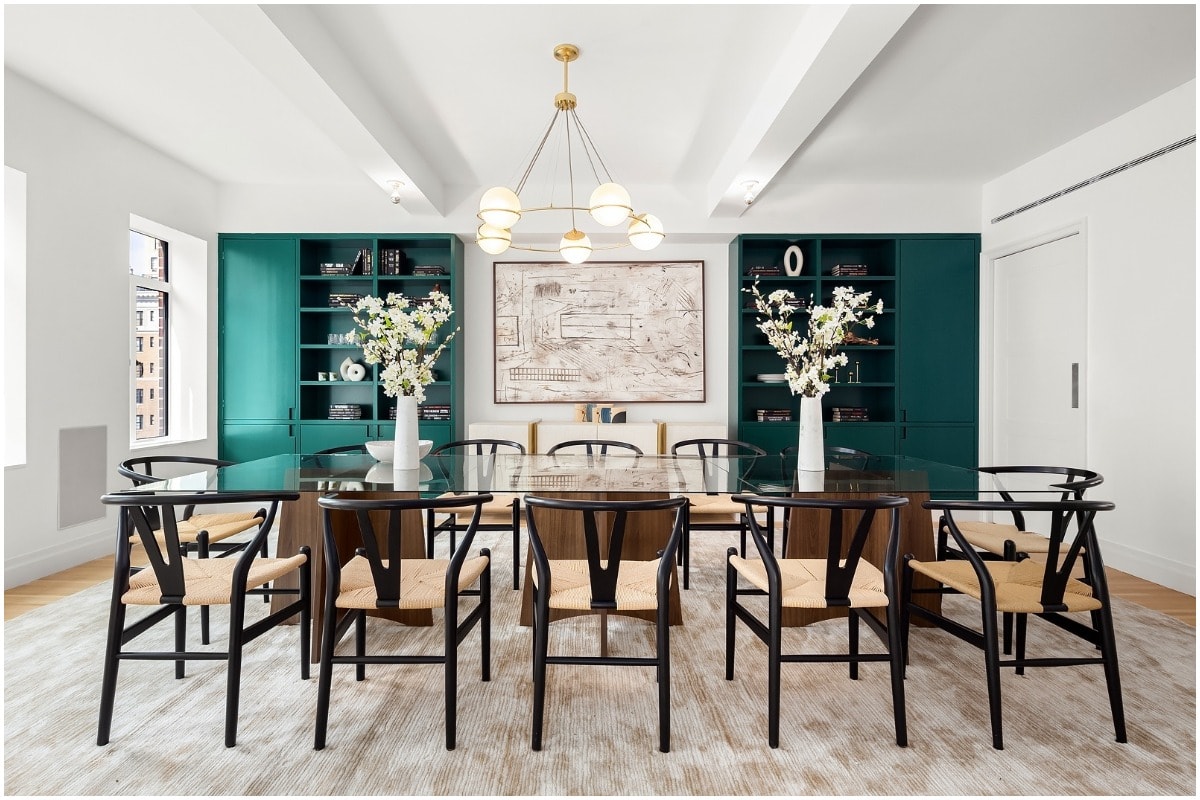
Staging a living room
You want to show your buyers a living room space that feels open, clean, and comfortable. That may mean removing oversized furniture. But you don’t need to strip your room bare. You can use throw pillows to introduce pops of color and draw your buyers’ eyes around the room. Adding healthy houseplants (not too many) will make the room feel nurturing and alive. You should also have warm, fashionable lighting to brighten the room.
Staging a bedroom
If you can’t stage every bedroom in your house, be sure to stage the master bedroom. Your color palette should feature neutral colors and feel calming. Soft blues, whites, and taupes tend to do best in sleeping spaces. Accessories should be kept to a minimum, but warm lighting and a throw blanket will pull the room together.
Staging a bathroom
Your bathroom should be clean, but it doesn’t need to feel sterile. For inspiration, consider the bathroom at a spa — clean, calm, and inviting. Amenities like fresh, fluffy towels, a textured shower curtain, and a new bar of soap in a spotless dish can make a big impact.
If your vanity is out of style or damaged, consider replacing it. A simple mirror can make things feel higher-end and doesn’t need to cost much. If your bathroom is dated consider doing a simple shower remodel by replacing tiles or changing out the showerhead.
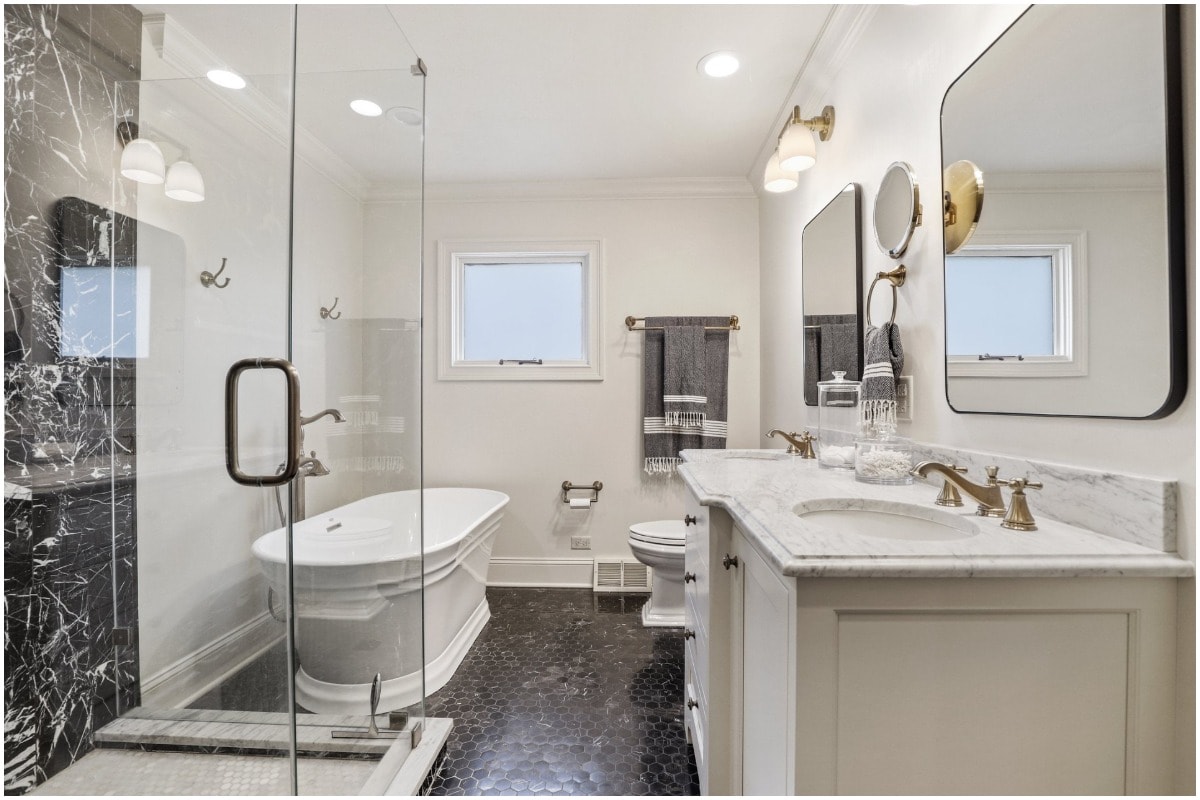
How much does it cost to stage your house?
The cost for staging your home depends on the methods you use, the size of your home, and the buyer you’re trying to attract. Below are the common ranges depending on your circumstances.
Professional staging for the luxury home seller
If you’re selling a luxury home or trying to appeal to a high-end buyer, you should stage your home with high-end design. That means pristine floors and walls, top-of-the-line finishings, and upscale furnishings.
When appealing to this crowd, it’s best to work with a professional. The cost will depend on your home size and ideal sales price. But, staging at this level should give you a sizable return on your investment.
Professional staging for the average home seller
The average seller isn’t selling luxury. But that doesn’t mean your home isn’t quality. For the average home seller, professional staging takes all the guesswork out of the process.
The good news is that it only costs about $1,500 with a good chance to get a return on the investment, according to NAR. How much it costs you depends on the specifics of your home, your buyer, and local costs.
DIY home staging
If you’ve got an eye for detail, basic design sense, and like taking on projects, DIY home staging may be a great fit. Depending on the work that needs to be done, DIY home staging typically costs less than $1,000.
However, be ready to invest some time and elbow grease. But, don’t be afraid to hire out. Bringing in professional cleaners, for example, can lighten your burden for a small fee.

How to save money on home staging costs
Whether you’re hiring a professional or going full DIY, there are some tips and tricks you can use to lower your costs.
When hiring a professional:
- Speak with your real estate agent first about how much work should be done
- Compare costs from several services in your area and be sure to read reviews
- Look for a referral discount through your realtor, friends, or coworkers
- Take on some (manageable) projects yourself, like minor landscaping and paint touch-ups
- Stage key rooms — living room, kitchen, and master suite are a must.
When DIY home staging:
- If you’re painting, purchase several gallons of premixed paint in the same neutral color family
- If your furnishings need an upgrade, shop thrift stores, Facebook marketplace, and garage sales— you can get higher quality items for major discounts
- Consider getting a consultation from a professional. For $100 to $300, you can get the right guidance on how to maximize your staging investment
When it comes to staging your house, it is important to create a space that potential buyers can envision themselves living in. By following these simple steps, you can create a great first impression and get one step closer to selling your home.
*Median Sale Price as of October 8, 2021
The post How to Stage a House: A Room by Room Guide appeared first on Redfin | Real Estate Tips for Home Buying, Selling & More.
